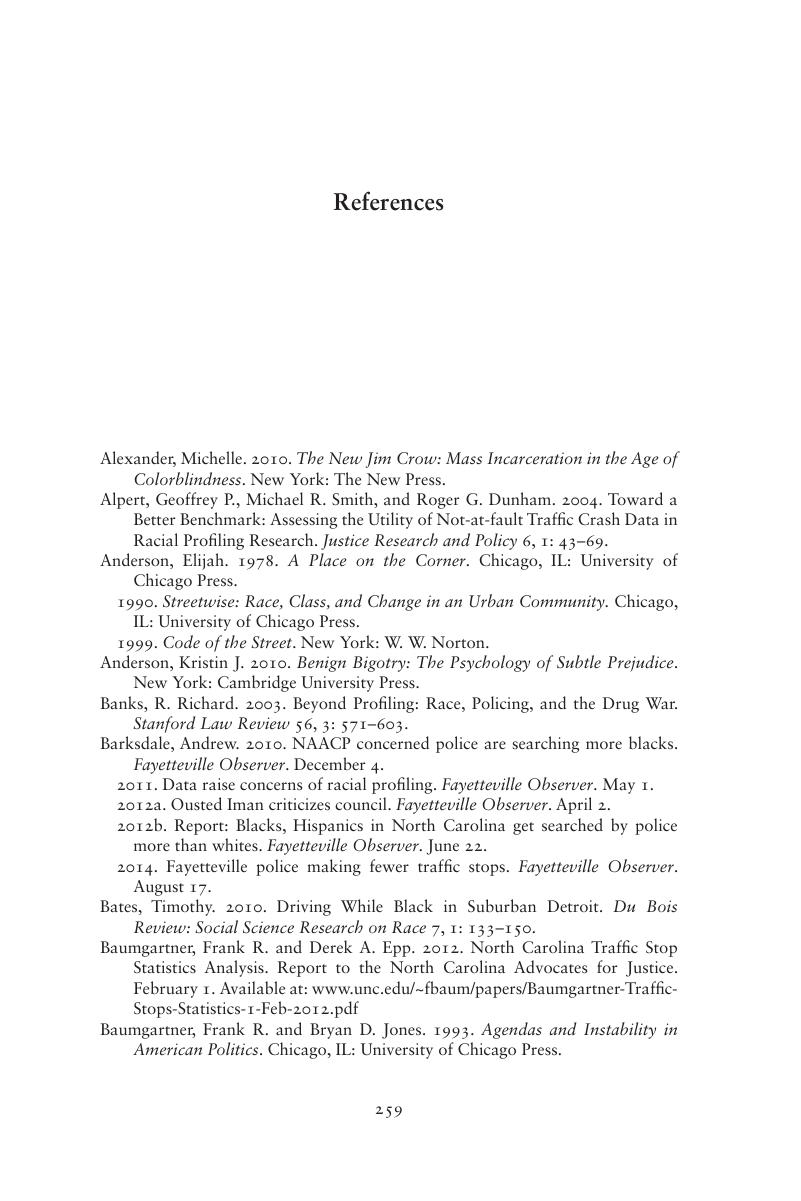Book contents
- Suspect Citizens
- Suspect Citizens
- Copyright page
- Contents
- Figures
- Tables
- Acknowledgments
- 1 Suspect Citizens
- 2 A Legislative Mandate to Address Concerns about Racial Profiling
- 3 Who Gets Stopped?
- 4 What Happens After a Stop?
- 5 Finding Contraband
- 6 Search and Arrest Patterns by Officer and Agency
- 7 Profiling Hispanics, Profiling Blacks
- 8 Black Political Power and Disparities in Policing
- 9 Reforms that Reduce Alienation and Enhance Community Safety
- 10 Conclusions
- Book part
- Notes
- References
- Index
- References
References
Published online by Cambridge University Press: 12 July 2018
- Suspect Citizens
- Suspect Citizens
- Copyright page
- Contents
- Figures
- Tables
- Acknowledgments
- 1 Suspect Citizens
- 2 A Legislative Mandate to Address Concerns about Racial Profiling
- 3 Who Gets Stopped?
- 4 What Happens After a Stop?
- 5 Finding Contraband
- 6 Search and Arrest Patterns by Officer and Agency
- 7 Profiling Hispanics, Profiling Blacks
- 8 Black Political Power and Disparities in Policing
- 9 Reforms that Reduce Alienation and Enhance Community Safety
- 10 Conclusions
- Book part
- Notes
- References
- Index
- References
Summary

Information
- Type
- Chapter
- Information
- Suspect CitizensWhat 20 Million Traffic Stops Tell Us About Policing and Race, pp. 259 - 272Publisher: Cambridge University PressPrint publication year: 2018
